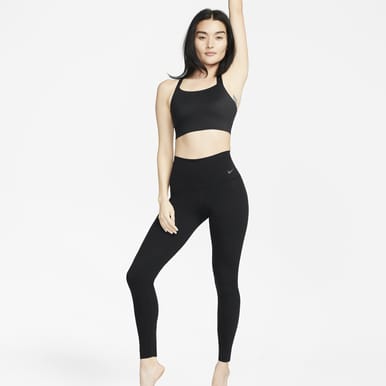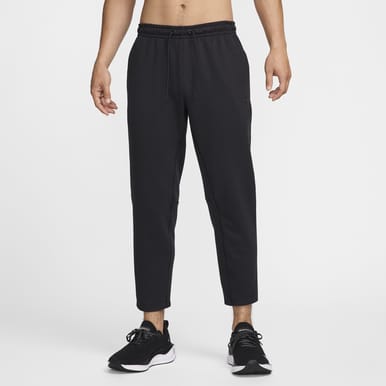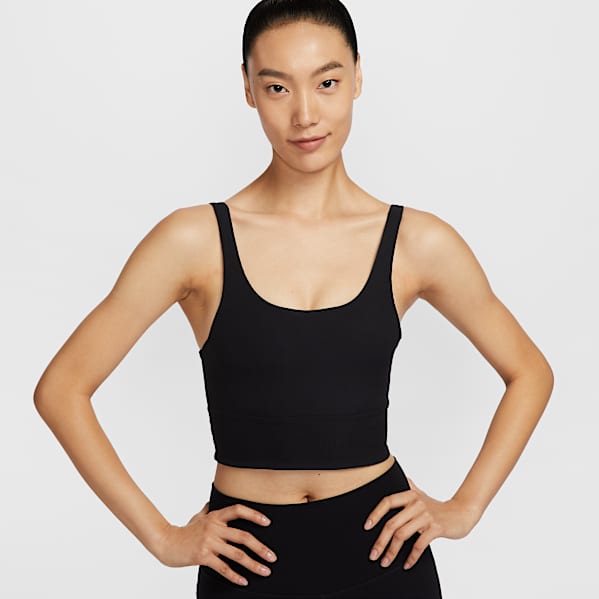9 Benefits of Hot Yoga for a Healthier Body and Mind
Health & Wellness
Hot yoga is done in a sauna-like environment, helping you de-stress, while giving you an intense workout and improving your strength and flexibility.

Yoga relaxes your mind, encourages you to focus on your breathing and joins your breath to your movement through various poses. Some yoga classes offer a heated studio environment to give you an even more intense workout.
A hot room creates a sauna-like environment, bringing your mind to the present while helping you unwind and de-stress. The heat gives your heart and lungs a harder workout, and just like non-heated yoga, you can improve your strength and flexibility.
Hot Yoga vs Bikram Yoga
You may hear hot yoga and Bikram yoga used interchangeably, but this isn't entirely accurate. Bikram is a type of yoga that consists of 26 poses that are repeated throughout a class, which is usually 90 minutes or less. The room is heated to 40 degrees Celsius, and typically, classes are quieter, without music or chanting.
Hot yoga is more of a general term that means the room is heated to anywhere from 26–38 degrees Celsius. It can also include different poses, depending on the studio and instructor. And unlike Bikram, hot yoga often includes music.
The heat from hot yoga makes the practice more challenging but also can provide physical and mental health benefits.
Benefits of Hot Yoga
1.Increased Flexibility
Stretching when your muscles are warm—as you do in hot yoga—improves flexibility in your muscles and increases range of motion in your joints. A March 2013 study in the Journal of Strength and Conditioning Research found that after 8 weeks, Bikram yoga participants had better flexibility in their shoulders, lower back and hamstrings compared to the control group.
Flexibility makes certain yoga poses easier to get into, especially ones that require deep stretching. Yoga also strengthens your muscles: That same study found participants also increased the amount they could deadlift.
2.Greater Lung Capacity
Because yoga concentrates on breathing techniques and staying mindful of your breaths, you train your lungs to retain more air. Taking regular, deep breaths allows more oxygen to enter your bloodstream, keeps your lungs healthy and increases your lung capacity, which tends to decrease with age.
Pranayama, a specific type of yoga breathing exercise, focuses on controlling your breath for a certain length of time. It involves abdominal, thoracic and clavicular breathing that trains you to increase oxygen intake.
3.Better Bone Mass
Bone density naturally decreases as people age. For example, those who go through menopause lose up to 50 percent of their bone mass, about half of which is lost during the first 10 years after menopause begins.
Over a 5-year period, perimenopausal people who practised Bikram yoga had increased bone density in their hips, lower back and neck, according to a May 2014 study in Scientific Research. The study concluded that a heated environment reduced the effects of osteoporosis for women by improving circulation, respiration and perspiration.
4.Burns Calories
A standard yoga class can burn anywhere from 180–460 calories, depending on the intensity and duration of the class and how much you weigh.
Colorado State University researchers found hot yoga practitioners were at the top of that range: Women burnt around 330 calories during a 90-minute class, while men burnt around 460 calories (due to being generally larger in size).
You sweat a lot more in a hot studio, which means your body must work harder to regulate your temperature and your heart must circulate more blood. That means burning more calories than you would in a traditional yoga class without heat.
5.Helps Improve Depression Symptoms
Both yoga and meditation can help reduce symptoms from depression, per the American Psychological Association.
Veterans who suffered from depression felt an overall improvement in their mood and depression after doing yoga for six weeks, according to a May–June 2018 study in Military Medicine. They did yoga, breathwork and mediation once a week for 60 minutes.
An August 2019 study in the Journal of Alternative and Complementary and Medicine found an eight-week course of Bikram yoga reduced depression symptoms for middle-aged women, including self-judgement, pessimism, poor quality of life and reduced cognitive function.
6.Regulates Blood Glucose Levels
Those with type 2 diabetes may benefit from yoga because it helps control blood sugar levels, according to an October 2013 study in the Journal of Bodywork and Movement Therapies. Researchers found that even a short-term (8-week) Bikram yoga programme improved glucose tolerance for older adults that tended to have obesity.
7.Helps Manage Stress
Yoga encourages you to turn inwards and create awareness of the outside factors that cause you stress. When you practise regularly, you'll start to understand how the breathing techniques, stillness and heat of the room help your body and mind relax.
In an April 2017 study in the Journal of Mental Health, a 16-week programme of hot yoga with physically sedentary adults improved mood and decreased stress levels after a single 90-minute session.
8.Boosts Heart Health
Working out in a hot room is no doubt a physical challenge. Your heart, lungs and muscles work harder, thus giving your respiration, heart rate and metabolism a boost.
One April 2019 study in the Journal of Alternative and Complementary Medicine found that one session of hot yoga gets your heart pumping at a similar rate as a brisk walk (3.5mph).
9.Improves Skin Health
Increased sweat improves circulation and increases oxygen-rich blood to your skin cells, providing you with a post-yoga glow.
Sweating from exercise can actually reverse signs of ageing from a cellular level. The positive impact means your skin can produce more collagen, better hydration and less sagging.
Hot Yoga Safety Tips
Just like any workout, you need to know how to stay safe and injury-free. Hot yoga can feel overwhelming or too stuffy for beginners, which is why it's important to ease into it and know what to expect and what to do if you feel overheated or fatigued. Here are a few tips:
- Stay hydrated: Drink water before, during and after class.
- Tune into your body: You always have the option of stepping out of class to get fresh air and cool down. Yoga teachers want you to feel safe and strong, so taking a break outside the room is encouraged if you need it.
- Talk to your doctor if you have pre-existing conditions: If you have a history of fainting due to low blood pressure or have a heart condition, make sure you have a conversation with your doctor first. The same applies if you're pregnant.
How to Get Started With Hot Yoga
If you're interested in hot yoga, consider trying a regular yoga class first. And ask your studio if they offer hot classes suited for beginners.
Some classes use the residual heat from the previous class, so it's not as hot as a regular heated yoga class but is usually between 26–29 degrees Celsius.
The important thing is to try it out so you can see whether hot yoga is right for you or if you'd rather stick to non-heated classes.





















